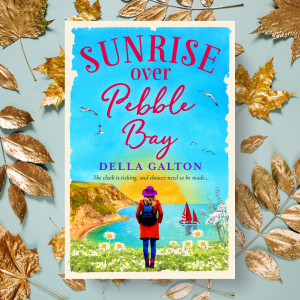A couple more question from my post bag at Writers’ Forum 🙂
Q: Do all stories have to feature conflict, resolution and growth, with false hopes and disappointments along the way? I appreciate that a straightforward happy little narrative would be largely purposeless and therefore unengaging, but I find it hard to accept that all stories should follow the ‘story arc’.
A You are absolutely right when you say that a straightforward, happy narrative might be unexciting to read. I call stories like this linear, i.e. a piece of writing that moves in a straight line with no surprises to a conclusion that is largely predictable. I think that there should be a story arc, but that can mean many different things. My personal definition of a story is a piece of writing where a character begins with a problem or conflict, which is resolved by the end in a satisfying, but unexpected way. The character should change in some way by the end. This provides the main arc of the story. I don’t think this can be too formulaic.
It’s not a case of putting in complications or ups and downs for the sake of it (as I thought when I first started writing stories). They all have to be relevant, both to the initial problem, and also to the character. There is huge scope in this. You can use different structures, you can use flashback, and you should use emotion, which for me, means writing from the heart. You can create twists by the use of misdirection. You can create surprises by withholding information from the reader.
Much depends on the length of the story. It’s difficult to have a big story arc in a flash fiction piece of say 500 words or even 1000. But there should still be some kind of story arc or progression. I hope this helps to clarify.
***
Q This magazine seems to be full of advice for writers who have already ‘made it’ and had their work published. However, there are still many of us who are trying to ‘make it’ and from our side of the fence getting published can sometimes feel like an impossible feat. From here, it seems that to sell your work and be published, you already need to have been published previously. But what if, like me, you don’t have any previous examples or clippings to show? How do you then sell your work and get published?
A Let me reassure you that you don’t have to have been published to get published. We all have to start somewhere. The key to getting published is to write what publishers and editors want. So first you need to know what that is. And you can find out by doing your own market research. Here are my top tips on market research.
- If you want to write for a particular magazine then first of all make sure they accept freelance submissions. If they don’t you’ll be wasting your time approaching them. Whether it’s fiction or features you want to write, ask for their contributor’s guidelines.
- Buy several copies of the magazine and look at house style. Is it chatty, or more serious and/or literary?
- Check the lengths of fiction/features they publish, 1000 words, 2000 words etc. (writing outside of these lengths will result in automatic rejection because they won’t have the slots to put your work.)
- Check the target reader they are aiming for, including age, sex, type of person. Adverts and letter pages are a good guide to this.
- Check their house style – do they prefer first person viewpoint or third, male or female etc.
- Make sure you are writing for their target reader.
- Make sure you send your submission to the right person and in the right format, e.g. via email or by snail mail.
If you are writing features you should send a query letter/email first. Head up your query with an eye catching title or question. I highly recommend Solange Hando’s book, Be a Travel Writer, Live your Dreams, Sell your Features: Travel Writing Step by Step. This is a book about selling travel features, but its excellent advice applies to selling all features.
Here’s an example of a query letter sent to a dog lovers magazine, which resulted in me being commissioned to write the feature.
Dear Debbie,
Feature query – Ten ways to help your local dog sanctuary
I was wondering if you’d be interested in a feature about the above. As you know, many sanctuaries, especially those that rescue dogs are in dire straits, thanks to the credit crunch. And the small ones tend to get hit the hardest.
Since June this year, myself and four friends have raised nearly £1000 for DAWG (Dorset Animal Workers Group).
The feature would cover various simple ways of raising money, i.e. what we did – and how we did it. Plus other things dog lovers can do to help their local rescue centre. I can provide illustrating pictures.
I’ll look forward to hearing what you think.
It is possible for a writer with no credits to be commissioned to write a feature. You just have to write what is wanted. Once you have been commissioned, make sure you supply the feature promptly. Be professional. You will usually have to try more than once. Perseverance in all types of writing for publication is the key. I hope this helps. Good luck.




